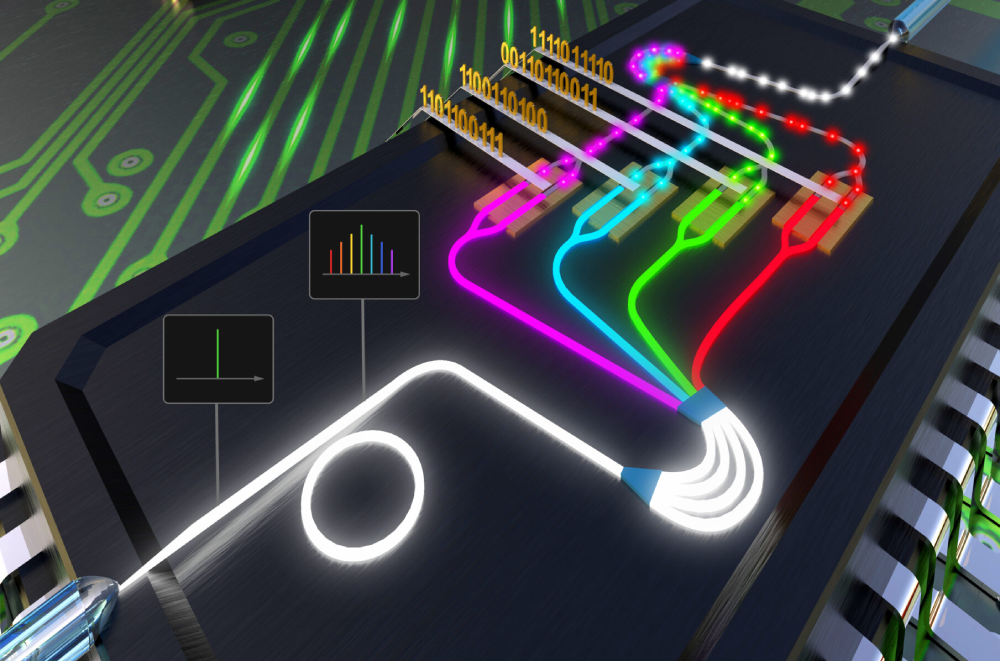Introduction
In the ever-evolving landscape of technology, one innovation stands out for its potential to reshape multiple industries simultaneously: Silicon Photonics
This groundbreaking technology combines the capabilities of silicon, a well-established semiconductor material, with the speed and efficiency of photons, enabling the creation of optical components and circuits.
With a history dating back to the 1960s, but truly gaining traction in the 1990s, silicon photonics has now reached a point where it is poised to revolutionize telecommunications, data communication, computing, and sensing.
This blog post delves into the history, benefits, and disruptive potential of the silicon photonics across various industries.
Follow us on Linkedin for everything around Semiconductors & AI
The Genesis of Silicon Photonics
The journey of this technology began with researchers in the 1960s exploring ways to leverage silicon for optical applications.
However, it wasn’t until the 1990s that the technology started to mature and garnered significant attention from the research community.
Over the past few decades, rapid advancements have propelled silicon photonics towards commercialization, with its potential applications becoming increasingly evident.
Understanding Silicon Photonics
Think about how the internet works. When you send an email or watch a video online, the information travels through cables made of glass or plastic fibers. These fibers use light to carry the information incredibly fast over long distances.
Now, imagine if the cables were made using silicon, like the stuff in computer chips. This is the basic idea of this technology.
Analogy: Light-Speed Postal Service
Imagine you have a super-fast postal service that can send letters and packages at the speed of light. Instead of using trucks and roads, they use special tunnels made of mirrors (like in a funhouse). The mirrors bounce light beams back and forth, carrying your letters from one place to another super quickly. Now, replace those mirrors with silicon chips. These chips can guide light just like the mirrors, but they’re really small and fit on a computer chip.
Real-Life Example: Laser Pointer
Have you ever played with a laser pointer? It emits a narrow beam of bright light that you can point at things. Now, picture a tiny chip made of silicon that acts like a super-miniaturized laser pointer. It can send out light signals and do cool things with them, like carrying information or doing calculations.
Analogy: Light Highway for Information
Imagine you’re at a big park, and you want to tell your friend on the other side about a cool discovery you made. Instead of shouting or running, you both have special light beams. You use your light beam to send a message, and your friend’s light beam catches the message and sends one back. These light beams travel super fast, like cars on a highway, carrying your messages to each other.
Also Read: Explained: What the hell is a Quantum Computer
The Disruptive Power of Silicon Photonic Technology
Silicon photonics holds a series of disruptive advantages that position it as a transformative force in technology:
Mass Production: Silicon is a cornerstone of modern electronics manufacturing, boasting a mature and cost-effective production process. This advantage extends to silicon photonics, enabling its mass production at a reasonable cost—a critical factor for widespread adoption.
Integration with Existing Infrastructure: This technology seamlessly integrates with the existing electronic infrastructure. This compatibility streamlines the incorporation of silicon photonics into established systems and paves the way for enhanced functionality and efficiency.
Improved Performance Metrics: This technology outperforms traditional optical technologies in several key aspects. It promises lower power consumption, reduced device size, and increased data transfer speeds, offering a potent combination of benefits for various applications.
Silicon Photonics Across Industries
Telecommunications: The telecommunications industry stands to benefit immensely from silicon photonics. By leveraging silicon photonics, more efficient and scalable optical networks can be constructed. Optical amplifiers amplify signals without introducing noise, and optical switches facilitate swift and seamless signal routing between network nodes, enhancing overall network performance and reliability.
Data Communication: Silicon photonics is a game-changer in data communication. High-speed optical interconnects for data centers address the escalating demand for rapid data transmission. These interconnects, far superior to traditional copper counterparts, are instrumental in supporting the high-performance computing needs of modern data centers.
Computing: The computing industry is on the brink of a revolution with optical processors powered by silicon photonics. These processors harness the incredible speed of light to perform calculations at unprecedented velocities. As a result, they promise to surpass the capabilities of electronic processors and enable a new era of high-performance computing.
Sensing: Silicon photonics introduces novel possibilities for sensing applications. By creating highly sensitive and accurate sensors, silicon photonics enables advancements in fields like quantum computing and lidar. Sensors capable of detecting single photons open the door to cutting-edge solutions in precision measurement and data acquisition.
Conclusion
Silicon photonics is poised to redefine technology as we know it, casting a transformative influence across a diverse array of industries. The technology’s journey from its early beginnings to its current state of rapid development showcases its potential to revolutionize telecommunications, data communication, computing, and sensing.
As silicon photonics continues to mature and find its place in the commercial landscape, we can anticipate even more remarkable and innovative applications that will shape the world for years to come.




